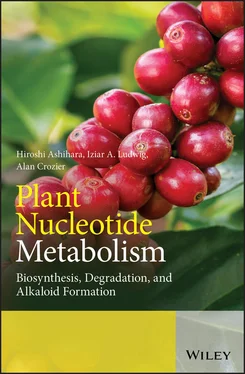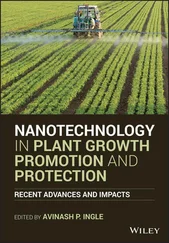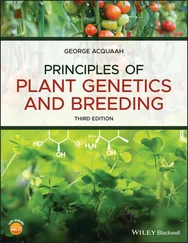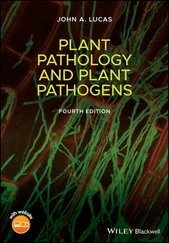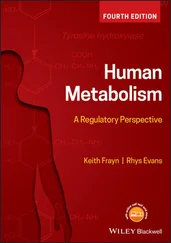Table 2.1 Concentration of nucleotides in plant cells and tissues.
Source: Based on Ashihara and Crozier (1999) and Riondet et al. (2005).
|
Arabidopsis thaliana |
Nicotiana tabacum |
Lycopersicon esculentum |
Camellia sinensis |
Catharansus roseus |
| Nucleotide |
Cells |
Leaves |
Cells |
Leaves |
Cells |
Leaves |
Leaves |
+Pi |
−Pi |
| ATP |
145 |
40 |
124 |
48 |
190 |
50 |
177 |
100 |
22 |
| ADP |
19 |
77 |
8 |
23 |
38 |
30 |
35 |
18 |
16 |
| AMP |
17 |
59 |
9 |
33 |
— |
55 |
14 |
16 |
12 |
| GTP |
26 |
tr |
23 |
tr |
24 |
tr |
26 |
26 |
8 |
| GDP |
— |
— |
— |
— |
— |
— |
tr |
3 |
3 |
| GMP |
tr |
9 |
tr |
— |
10 |
— |
tr |
3 |
2 |
| IMP |
— |
8 |
— |
20 |
— |
20 |
— |
— |
— |
| XMP |
— |
— |
— |
— |
— |
— |
29 |
— |
— |
| UTP |
18 |
20 |
49 |
7 |
27 |
6 |
88 |
55 |
10 |
| UDP |
tr |
18 |
— |
23 |
59 |
16 |
46 |
29 |
22 |
| UMP |
178 |
81 |
187 |
74 |
174 |
50 |
55 |
33 |
24 |
| CTP |
9 |
tr |
4 |
12 |
— |
— |
tr |
7 |
2 |
| CDP |
tr |
— |
— |
9 |
— |
— |
tr |
4 |
2 |
| CMP |
— |
tr |
— |
tr |
— |
tr |
32 |
6 |
3 |
| Relative rate |
| ΣAN (%) |
44 |
56 |
35 |
42 |
44 |
60 |
48 |
45 |
40 |
| ΣGN (%) |
6 |
3 |
6 |
0 |
7 |
0 |
6 |
11 |
10 |
| ΣUN (%) |
48 |
38 |
59 |
42 |
50 |
0 |
40 |
39 |
44 |
| ΣCN (%) |
2 |
0 |
1 |
8 |
0 |
32 |
7 |
6 |
6 |
| Energy status |
| EC |
0.85 |
0.45 |
0.91 |
0.57 |
0.92 |
0.48 |
0.86 |
0.81 |
0.60 |
| ATP/ADP |
7.6 |
0.5 |
14.9 |
2.0 |
5.1 |
1.7 |
3.3 |
5.6 |
1.4 |
The values (nmol g −1f.w.) are obtained from the suspension-cultured cells at the exponential phase of growth and young leaves. For comparison, the values from phosphate-deficient Catharanthus roseus cells are also shown. tr: trace and EC: energy charge.
There are similar profiles of nucleotide pools in almost all plants. The pools of adenine nucleotides and uridine nucleotides (aka uracil nucleotides) always exceed the guanine nucleotide pool. The cytidine nucleotide pool is the smallest of these pools. The nucleoside triphosphate levels are usually much more substantial than those of nucleoside mono- and diphosphates.
The intracellular levels of nucleotides in plant cells are influenced by several environmental factors. For example, Pi starvation of cultured plant cells results in a marked decrease in the levels of nucleotides, especially nucleoside triphosphates ( Table 2.1). The proportion of adenylates, i.e. the adenylate energy charge ([ATP] + ½[ADP])/(ATP + ADP + AMP) originally proposed by Atkinson (1977), is maintained at an almost constant ratio of 0.8–0.9 in actively growing plant cells. The energy charge in young tea leaves, 0.86, is within this range, but leaves of A. thaliana , tobacco, and tomato showed lower values, 0.5−0.6, because of the higher concentrations of ADP and AMP. While the energy charge fluctuates with diverse growth conditions, some reported changes might be ascribed to the presence of hydrolytic enzymes in extracts. The ATP/ADP ratio is also a major parameter of interest in the investigation of metabolic aspects of bioenergetics. The ratios are usually high in actively growing cells and tissues.
2.1.2 Concentration of Purine and Pyrimidine Bases and Nucleosides
Plant cells, as well as microorganisms and animal cells contain, at best, very low cellular pools of bases and nucleosides ( Table 2.2). It is thought that this may be caused by the high activities of salvage enzymes resulting in a rapid conversion of purine bases into their respective nucleotides (Ashihara et al. 2018). In many plant cells, adenine and guanine pools are markedly smaller than those of their nucleotides (Ashihara et al. 1990; Brown 1963; Grzelczak and Buchowicz 1975). For example, the adenine and guanine content of wheat grain are 4 and 5 nmol g −1d.w., respectively (Grzelczak and Buchowicz 1975). Shimano and Ashihara (2006) found only trace amounts of adenine and guanine in growing C. roseus cells, but the purine bases accumulated after prolonged Pi starvation, when adenine nucleotide contents were reduced ( Table 2.2). A much higher content of adenine, up to 300 nmol g −1d.w., has been reported in the youngest, upper leaves of barley (Sawert et al. 1988), and in soybean seeds (Yokozawa and Oura 1986).
Compared with purine bases, sizeable amounts of purine nucleosides have been detected in plants (Ashihara et al. 1990; Grzelczak and Buchowicz 1975; Sawert et al. 1988; Shimano and Ashihara 2006). For example, the adenosine, guanosine, and xanthosine content of mature pea seeds are 152, 67, and 91 nmol g −1d.w., respectively (Brown 1963). Accumulation of nucleosides also occurs in some cereal leaves. For instance, in young wheat leaves, the adenosine pool (300 nmol g −1d.w.) is similar to that of ATP (280 nmol g −1d.w.) (Sawert et al. 1988). Nucleosides, such as adenosine, may be stored in vacuoles of plant cells as excess cytosolic nucleosides can disturb the cellular energy charge and inhibit the activity of several metabolic pathways associated with the S -adenosyl-L-methionine cycle (Ashihara et al. 2018; Oikawa et al. 2011).
Table 2.2 Concentration of nucleosides and nucleobases in plant cells and tissues.
Source: Based on data of Wagner and Backer (1992) and Shimano and Ashihara (2006).
|
Nicotiana tabacum |
Datura innoxia |
Catharanthus roseus |
|
|
|
|
| Nucleosides and bases |
Cells |
Leaves |
Cells |
+Pi |
−Pi a) |
Peanut Leaves |
Barley Leaves |
Wheat Leaves |
Rye Leaves |
| Adenosine |
3.8 |
— |
1.0 |
— |
8.1 |
9.0 |
69.0 |
41.9 |
40.6 |
| Guanosine |
— |
— |
2.3 |
1.3 |
13.6 |
— |
27.6 |
22.3 |
4.6 |
| Inosine |
— |
— |
— |
— |
— |
— |
2.0 |
— |
— |
| Uridine |
4.2 |
2.0 |
4.7 |
1.0 |
4.1 |
— |
57.1 |
15.8 |
4.1 |
| Cytidine |
— |
— |
— |
0.9 |
17.5 |
— |
— |
— |
— |
| Adenine |
— |
— |
— |
— |
1.5 |
— |
41.4 |
13.0 |
8.7 |
| Guanine |
— |
— |
— |
— |
7.2 |
— |
— |
— |
— |
| Uracil |
— |
— |
— |
— |
— |
— |
— |
— |
— |
| Cytosine |
— |
— |
— |
— |
— |
— |
— |
— |
— |
The values (nmol g −1f.w.) were obtained from the suspension-cultured cells at the exponential phase of growth phase and young leaves. For comparison, the values from phosphate-deficient Catharanthus roseus cells are also shown.
Читать дальше
